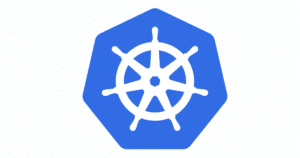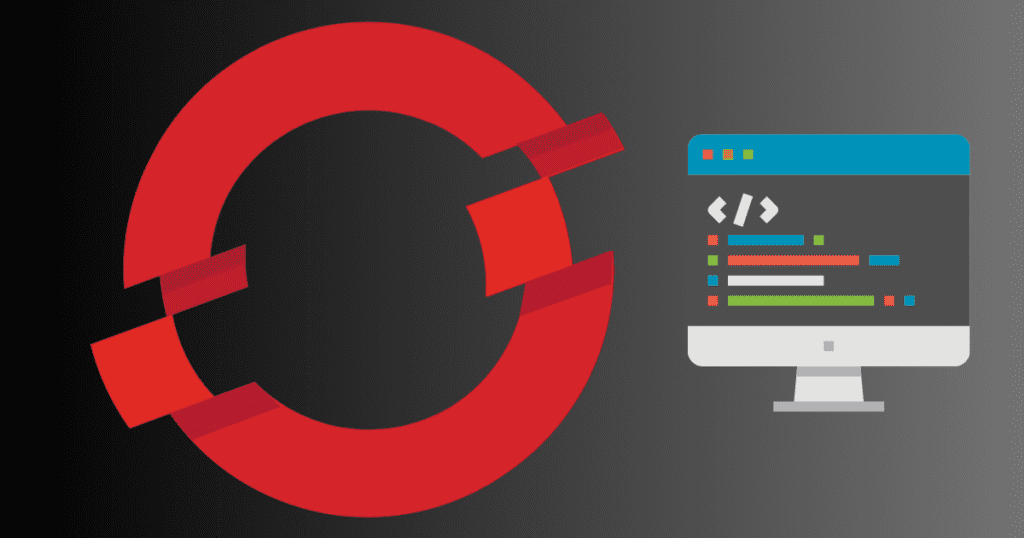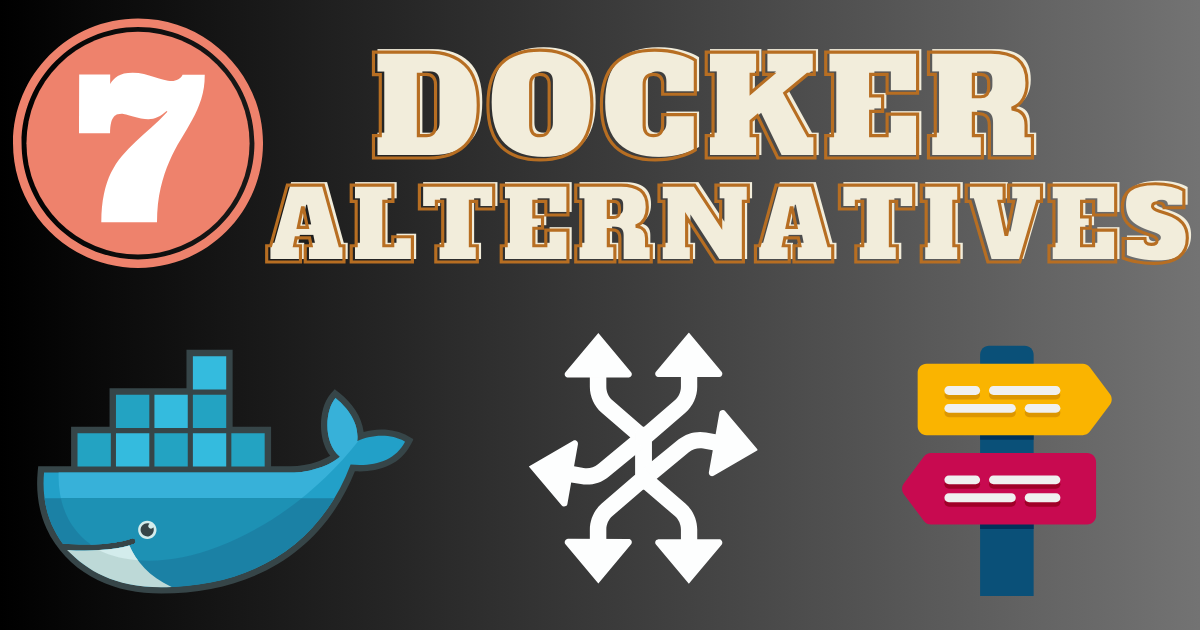Containerization has revolutionized the way applications are deployed and managed, with Docker leading the pack in popularity. However, as technology evolves, so do the needs of developers and enterprises. In this article, we’ll explore Docker alternatives, considering factors such as resource efficiency, security, and compatibility.
Understanding Docker Limitations
Docker’s widespread adoption is undeniable, but it’s crucial to recognize its limitations. The resource-intensive nature, compatibility issues, and security concerns have paved the way for innovative Docker alternatives.
Resource-Intensive Nature:
Docker, while highly efficient in isolating applications, can be resource-intensive. Each container runs its isolated environment, consuming additional memory and CPU. In scenarios with limited resources, this can lead to performance bottlenecks and affect the overall system responsiveness.
Compatibility Issues with Some Applications:
One notable limitation of Docker lies in compatibility issues with certain applications. While Docker has a vast repository of images, not all applications seamlessly integrate or run well within Docker containers. This can result in extra effort and troubleshooting to ensure proper functionality.
Security Concerns:
Despite Docker’s efforts to provide a secure containerization environment, it is not immune to security vulnerabilities. Running containers with elevated privileges or inadequate isolation can pose security risks. In multi-tenant environments, the shared kernel architecture introduces the potential for security breaches.
Persistent Storage Challenges:
Docker containers are ephemeral by design, meaning they are intended to be stateless and easily replaceable. However, handling persistent storage in Docker poses challenges. Managing data across container restarts or ensuring data integrity can be complex, especially when dealing with databases or stateful applications.
Limited Network Functionality:
Docker’s networking capabilities, while suitable for many scenarios, have limitations. Complex networking requirements, such as cross-container communication or intricate network topologies, may require additional configurations or the use of external tools, adding complexity to the deployment.
Single Host Focus:
Docker is primarily designed for single-host environments. While solutions like Docker Compose facilitate multi-container setups on a single host, managing containerized applications across a cluster of hosts can be more challenging. This limitation becomes apparent in large-scale deployments that demand distributed architectures.
Versioning Challenges:
Managing versions of Docker images and ensuring consistent deployments across different environments can be challenging. Docker lacks built-in versioning control, and mismatches between development, testing, and production environments may lead to unexpected behavior or deployment issues.
Containerization Landscape
At its core, containerization is a lightweight, portable, and efficient method of packaging, distributing, and running applications. Containers encapsulate everything needed to run an application, including code, runtime, libraries, and dependencies, ensuring consistency across various environments.
Key Players in the Containerization Field:
Several key players contribute to the robust containerization ecosystem. While Docker is the household name that popularized containers, other noteworthy Docker alternatives have emerged, each addressing specific needs:
- Podman: Emphasizing lightweight and daemonless container management, Podman is a Docker alternative that integrates seamlessly with existing Docker workflows.
- Kubernetes: Positioned as an orchestrator, Kubernetes excels in managing the deployment, scaling, and operation of application containers across clusters of hosts. It provides a declarative configuration to define desired states.
- cri-o: Tailor-made for Kubernetes environments, cri-o is a lightweight container runtime focused on simplicity and compatibility with Kubernetes principles.
- Buildah: Focusing on image building, Buildah separates the process from the container runtime. This modular approach gives developers more control over the image creation process.
- OpenShift: Geared towards enterprises, OpenShift is an end-to-end container platform that extends Kubernetes with developer and operational tools. It emphasizes security, scalability, and streamlined application development.
- Containerd: As a core component in container runtimes, Containerd provides essential functionalities while adhering to industry standards. It serves as the core container execution and supervision layer.
- Rkt: Prioritizing simplicity and security, Rkt is a container runtime that follows the principles of immutable infrastructure, providing a consistent and secure deployment model.
Detailed Comparison Between Different Docker Alternatives
Podman: A Lightweight Alternative
Podman emerges as one of the lightweight Docker alternatives, addressing resource concerns and providing a seamless experience. Its compatibility with Docker images and straightforward CLI makes it a compelling option.
Strengths:
Resource Efficiency
Podman distinguishes itself with its lightweight nature, making it an ideal choice for environments where resource efficiency is a priority. Its ability to run containers without the need for a daemon contributes to its efficient resource utilization.
Docker Compatibility
One of Podman’s significant strengths is its seamless integration with Docker. Users can effortlessly run Docker containers using Podman, easing the transition for those already familiar with Docker.
Weaknesses:
Limited Orchestration
While Podman excels as a container runtime, it lacks built-in orchestration features. For organizations requiring extensive orchestration capabilities, additional tools may need to be integrated.
Kubernetes: Orchestrating Containers at Scale
For those seeking orchestration at scale, Kubernetes takes the spotlight. While Docker focuses on single-container deployments, Kubernetes excels in managing complex, multi-container applications.

Strengths:
Scalability
Kubernetes has become synonymous with scalable container orchestration. Its architecture is designed to manage complex, multi-container applications efficiently, making it a top choice for enterprises with expansive infrastructure needs.
Declarative Configuration
Kubernetes allows users to define the desired state of their applications declaratively. The platform then automatically handles deployment, scaling, and management based on the defined configurations, providing a powerful and flexible approach.
Weaknesses:
Learning Curve
Despite its robust features, Kubernetes has a steep learning curve. Its complex architecture and numerous concepts can be overwhelming, especially for smaller projects that may not benefit from its extensive capabilities.
CRI-O: Focused on Kubernetes Integration
CRI-O is tailor-made for Kubernetes environments, streamlining container runtimes and adhering to Kubernetes’ principles. Its minimalistic approach ensures efficiency without sacrificing functionality.
Strengths:
Focused Kubernetes Integration
cri-o is purpose-built for Kubernetes environments, aligning with the principles of simplicity and compatibility. It serves as a lightweight container runtime with a strong emphasis on integration with Kubernetes.
Security
cri-o’s minimalistic design enhances security by reducing the attack surface. This feature makes cri-o an attractive choice for security-conscious users and environments.
Weaknesses:
Limited Features
While cri-o excels in its specialized role, it may lack some of the features found in more comprehensive solutions like Docker. Its minimalistic approach may limit functionality for certain use cases.
Buildah: Simplifying Image Building
Buildah simplifies the image-building process, separating it from the container runtime. This modular approach provides flexibility and control, allowing developers to craft customized container images effortlessly.
Strengths:
Image Building Separation
Buildah separates the image-building process from the container runtime, offering developers more control and flexibility. This modular approach simplifies the image-building process.
No Daemons
Buildah operates without a daemon, reducing complexity and potential security risks associated with running a background process. This design choice aligns with the broader industry trend towards minimalism and security.
Weaknesses:
Not an Orchestration Tool
Buildah, like Podman, focuses on image building and lacks built-in orchestration features. Organizations seeking orchestration capabilities may need to complement Buildah with other tools.
OpenShift: Enterprise-Grade Container Platform
OpenShift goes beyond container orchestration, offering an enterprise-grade container platform. Its comprehensive features, including built-in security and scalability, make it an attractive choice for large-scale deployments.

Strengths:
Comprehensive Features
OpenShift stands out as an enterprise-grade container platform that goes beyond basic container orchestration. It integrates built-in security, monitoring, and scaling capabilities, providing a holistic solution for large-scale deployments.
Developer and Operator Experience
OpenShift aims to enhance both developer and operator experiences by providing a suite of tools for building, deploying, and managing applications. This focus on user experience is valuable for organizations with diverse teams.
Weaknesses:
Complexity
The extensive feature set of OpenShift introduces complexity, making it more suitable for larger enterprises with complex requirements. Smaller projects may find the additional features unnecessary.
Containerd: Core Component of Container Runtimes
Containerd serves as a core component in container runtimes, providing the necessary functionalities without unnecessary complexity. Its compatibility with industry standards enhances interoperability.
Strengths:
Simplicity
Containerd is designed to be a simple and reliable core component for container runtimes. It adheres to industry standards, providing essential container runtime functionalities without unnecessary complexity.
Compatibility
Containerd boasts compatibility with various containerization platforms, making it a versatile choice. Its simplicity and compatibility make it an appealing option for various use cases.
Weaknesses:
Limited Features
While Containerd provides core container runtime functionalities, it may lack some advanced features found in more feature-rich solutions. Organizations with specific feature requirements may need to assess their compatibility with Containerd.
Rkt: Simplicity and Security Combined
Rkt distinguishes itself by prioritizing simplicity and security. With a minimal attack surface and a clear focus on container isolation, it’s an excellent choice for security-conscious users.
Strengths:
Security Emphasis
Rkt places a strong emphasis on security by adopting a minimalistic approach. Its design reduces the attack surface, making it a robust choice for security-conscious users and environments.
Immutable Infrastructure
Rkt follows the principles of immutable infrastructure, providing a deployment model that enhances consistency and reliability. This model aligns with modern practices for maintaining infrastructure.
Weaknesses:
Smaller Ecosystem
Rkt has a smaller user and contributor base compared to more established solutions like Docker. While it prioritizes simplicity and security, the smaller ecosystem may result in fewer community-supported integrations.
Choosing the Right Alternative
Selecting one of the right Docker alternatives involves considering factors like scalability, compatibility, and future-proofing. Matching the Docker alternatives to specific use cases ensures optimal performance.
Migrating to Docker Alternatives
Migrating from Docker to an alternative requires careful planning. This section provides practical steps, addresses common challenges, and shares success stories of organizations that made a seamless transition.
Community Support and Documentation
The strength of a containerization solution often lies in its community support and documentation. We explore the significance of active communities and comprehensive documentation, highlighting real-world examples.
Future Trends in Containerization
As technology advances, new trends emerge in the containerization space. Stay ahead of the curve by exploring emerging technologies and predictions for the future.
Also Read: DevOps as a Service: The Positive Impact of DaaS Unleashed
Conclusion
In conclusion, Docker alternatives offer diverse solutions to cater to specific needs. Whether it’s resource efficiency, security, or scalability, the containerization landscape has options worth exploring. Developers and enterprises are encouraged to experiment with different docker alternatives to find the perfect fit for their requirements.
FAQs
- Q: Why consider Docker alternatives?
- A: While Docker is popular, Docker alternatives offer unique features and address specific concerns like resource usage and security.
- Q: Is Kubernetes a direct replacement for Docker?
- A: No, Kubernetes is an orchestrator, while Docker focuses on containerization. They can complement each other in a comprehensive solution.
- Q: How challenging is it to migrate from Docker to an alternative?
- A: Migration requires planning, but many organizations have successfully transitioned, benefiting from the strengths of different solutions.
- Q: What role does community support play in choosing an alternative?
- A: Active community support ensures ongoing development, timely updates, and a wealth of shared knowledge for users.
- Q: Can I use multiple containerization solutions in tandem?
- A: Yes, some scenarios benefit from a combination of solutions, leveraging the strengths of each for a customized approach.
